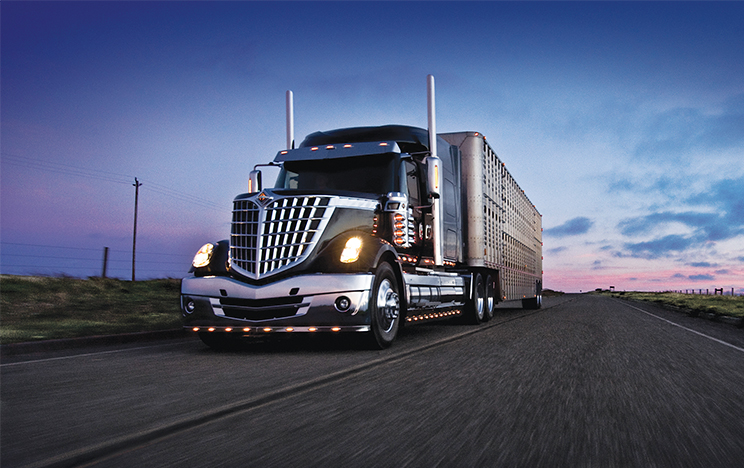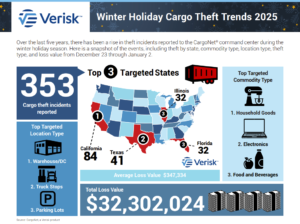If there are statistics that best show the weirdness of the U.S. market for Class 8 trucks, it might be these: May sales were down 4.8% from April, but at the same time were up 97.3% from May 2020. The odd occurrence happened because May was the worst sales month of 2020 as the economy bottomed out due to COVID-19 shutdowns.
In May, 18,761 new Class 8 trucks were sold in the U.S. market, compared to 19,714 in April — and only 9,510 in May 2020 — according to data received from ACT Research. It could have been more, but shortages of steel, plastic, semiconductors and other supplies meant manufacturers sold fewer trucks from the assembly line and more from existing inventories.
The shortage of semiconductors has made the news, but a shortage of plastics, including the commonly used polyethylene, may end up having a bigger impact on builders. Polyethylene is the most widely used plastic product in the world, and 85% of the U.S. supply comes from Texas.
“That deep freeze that we had in Texas back in February, I want to say destroyed most of the plastic-producing machinery in the United States,” explained Kenny Vieth, president and senior analyst for ACT. “You’ve got machines with melted plastic running through them. So, when you shut the system down, it’s a very precise process.”
That shutdown process wasn’t followed because the machines stopped suddenly when the plants lost power. While they waited for the lights to come on, the melted product solidified in the machines, resulting in a time-consuming cleaning and repair process for parts and tubing that weren’t destroyed.
The electricity was out for days but many of the plastic-making machines were out of commission for weeks. Manufacturers of truck parts that require plastics couldn’t get the pellets that feed their machines.
Vieth noted that shortages were also reported for items such as wiring harnesses and tires, as well as forged parts such as transmission housings. “You could build a truck with all the parts that you couldn’t get ahold of,” he said.
Some of these shortages are just part of the normal economic recovery process.
“There’s always that normal constraint when the industry ramps up. It just, takes time to get the process moving,” Vieth explained, adding that better days are coming.
“I think it gets better from here. And I think it gets better rapidly,” he predicted.
Truck orders fell in May to just 23,100 for the North American market, but not because carriers aren’t interested in buying.
“The near-term backlog is filled,” Vieth noted. “And the OEMs haven’t fully opened their 2022 order books.”
Simply put, there are no build slots left for 2021 model trucks.
The manufacturers typically start taking orders for the following model year in October, but they have started as early as July in the past — and Vieth predicts they will do so again this year. When they do, things will “pop,” according to Vieth.
“We’re expecting in the next few months to see that backlog of 250,000 units to rise to 300,000 or more,” he said.
The current backlog of a quarter-million orders would take 9.9 months to fill at current build rates — and that’s if no further orders are received.
“If you ordered a truck in May, the first quarter of next year is when you could expect delivery,” Vieth said.
With the long wait time, very few orders are being canceled.
“We had 1,100 cancellations in May, which is nothing,” Vieth said, explaining that a carrier with an order in for a truck with a 15-liter engine, for example, might accept a truck with a 13-liter engine if it’s available without the wait, resulting in a cancellation of the original order.
Carriers that are thinking about the used tractor market to improve their fleets may not be happy with what they find, according to a release of ACT’s preliminary “State of the Industry” report. Average prices for used trucks in May increased another 5% over April prices and were a whopping 52% higher than in May 2020, when the market was depressed due to the pandemic.
Part of that increase could be attributed to carriers buying newer, recent-model trucks to fill fleet needs, driving the average price higher.
“By all indications, demand continues to outpace supply, and for that reason, it should come as no surprise that truck prices continue to increase,” said Steve Tam, vice president of ACT.
In any event, those planning to turn to the used tractor market may be disappointed at the selection and the prices, if they can find a truck that meets their needs at all.
International was the only OEM to sell more trucks in May than in April, according to data received from Wards Intelligence. International sold 2,277 units, compared with 2,192 a month earlier for a 3% increase.
Volvo Truck experienced the largest month-over-month decrease with May sales of 1,413 compared to 1,934 in April, a decline of 26.9%. For the year to date, Volvo has captured 10% of the U.S. Class 8 market compared to 9.4% at the same point of 2020 and 9.7% at the end of that year.
Mack sales declined by 6.3%, from 1,649 in April down to 1,545 in May.
Freightliner sales of 6,653 in May were down 5.8% from April’s 7,065. Year to date, the company still holds about 39.3% of the U.S. Class 8 market.
Kenworth sales of 2,919 were down 2% from April sales of 3,005, while Peterbilt sales declined 1.9% with 2,933 sold in May compared to 2,990 in April. Together, the PACCAR siblings are responsible for 29.6% of U.S. Class 8 sales for the year-to-date.
Western Star sold 447 trucks in May, down 11.3% from April sales of 504. So far in 2021, the company has sold 2,259 trucks, behind last year’s 2,430 at the same point for a decline of 7%.
As parts become available, the build pace should pick up at the OEMs. For the next six months or more, however, trucks will be hard to find, and prices will be high.
Cliff Abbott is an experienced commercial vehicle driver and owner-operator who still holds a CDL in his home state of Alabama. In nearly 40 years in trucking, he’s been an instructor and trainer and has managed safety and recruiting operations for several carriers. Having never lost his love of the road, Cliff has written a book and hundreds of songs and has been writing for The Trucker for more than a decade.















